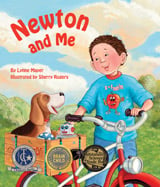Alignment to Standards for KY

| Grade | Number | Standard |
|---|---|---|
| 4 | SC-04-1.2.2 | causes and effects of pushes and pulls (forces) on objects based on representations or interpretations of straight-line movement/motion in charts, graphs, and qualitative comparisons. |
| 4 | SC-04-1.2.2a | The position and motion of objects can be changed by pushing or pulling. The amount of change is related to the force (defined as the strength of the push or pull) and the mass of the object(s) used. The force with which a ball is hit illustrates this pri |
| 4 | SC-4-MF-S-2 | make inferences about the size of forces or the change in motion produced by various forces |
| 4 | SC-4-MF-U-1 | an objectês motion can be described as its change in position over time and can be represented in a variety of ways. |
| 4 | SC-4-MF-U-2 | forces (pushes and pulls) cause changes in the direction or speed of something moving; the greater the force on an object, the greater its change in motion. |
| 4 | SC-4-MF-U-4 | things vary greatly in their motion. Some things move so fast they cannot be seen, while others are so slow that we cannot see that they are moving at all. Technology enables people to observe these fast or slow movements. |
| Primary | SC-EP-1.2.2 | An objectês motion can be observed, described, compared and graphed by measuring its change in position over time. |
| Primary | SC-EP-1.2.3 | predict changes in position and motion as related to the strength of pushes and pulls. |
| Primary | SC-EP-1.2.3a | The position and motion of objects can be changed by pushing or pulling, and can be explored in a variety of ways (such as rolling different objects down different ramps). |
| Primary | SC-EP-1.2.3b | The amount of change in position and motion is related to the strength of the push or pull (force). |
| Primary | SC-EP-1.2.3d | cause and effect relationships related to forces and motions, consequences of change can be predicted. |
| Primary | SC-P-MF-S-2 | observe and describe (e.g., using words, pictures, graphs) the change in position over time (motion) of an object |
| Primary | SC-P-MF-S-3 | qualitative (e.g., hard, soft, fast, slow) descriptions of pushes/pulls and motion |
| Primary | SC-P-MF-U-1 | things move in many different ways (e.g., fast and slow, back and forth, straight, zig zag, etc.). |
| Primary | SC-P-MF-U-2 | forces (pushes or pulls) can cause objects to start moving, go faster, slow down, or change the direction they are going. |
| Primary | SC-P-MF-U-3 | Students will understand that the position of an object can be described by locating it relative to another object or the background. |